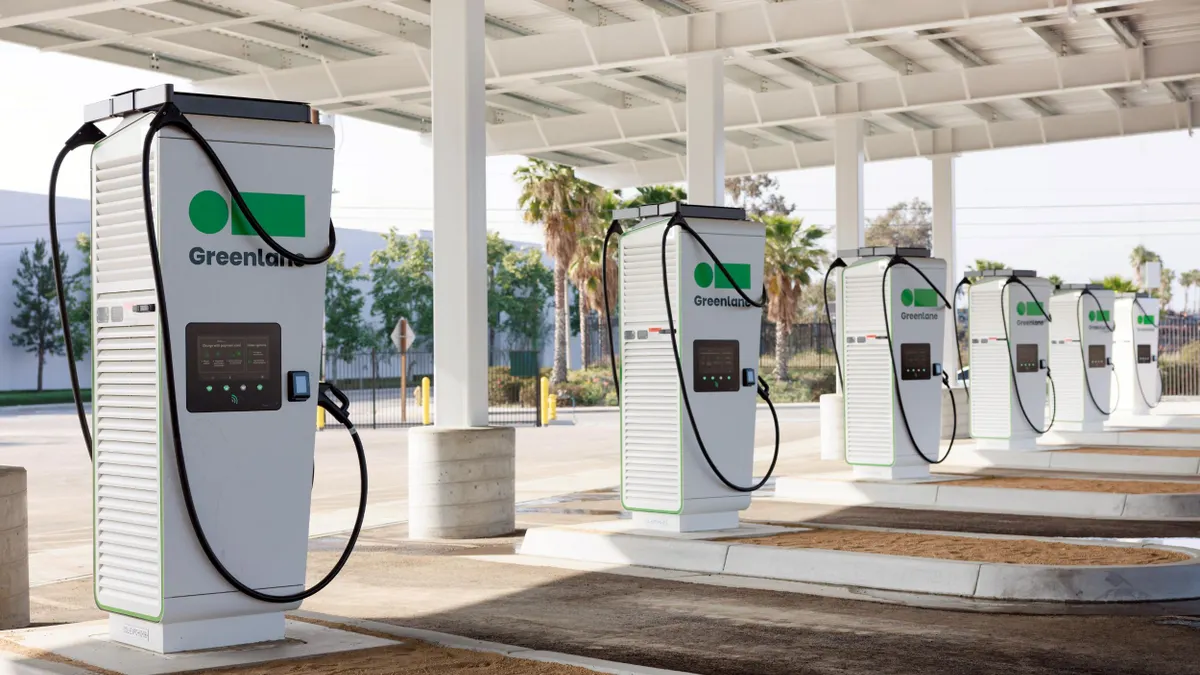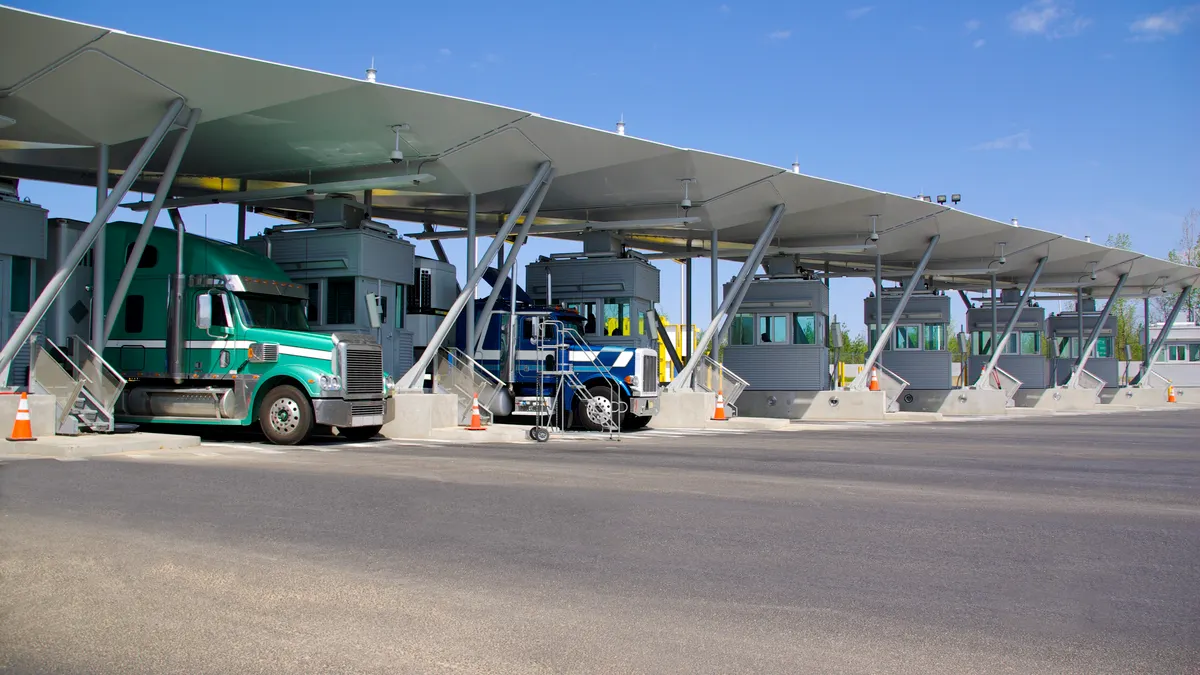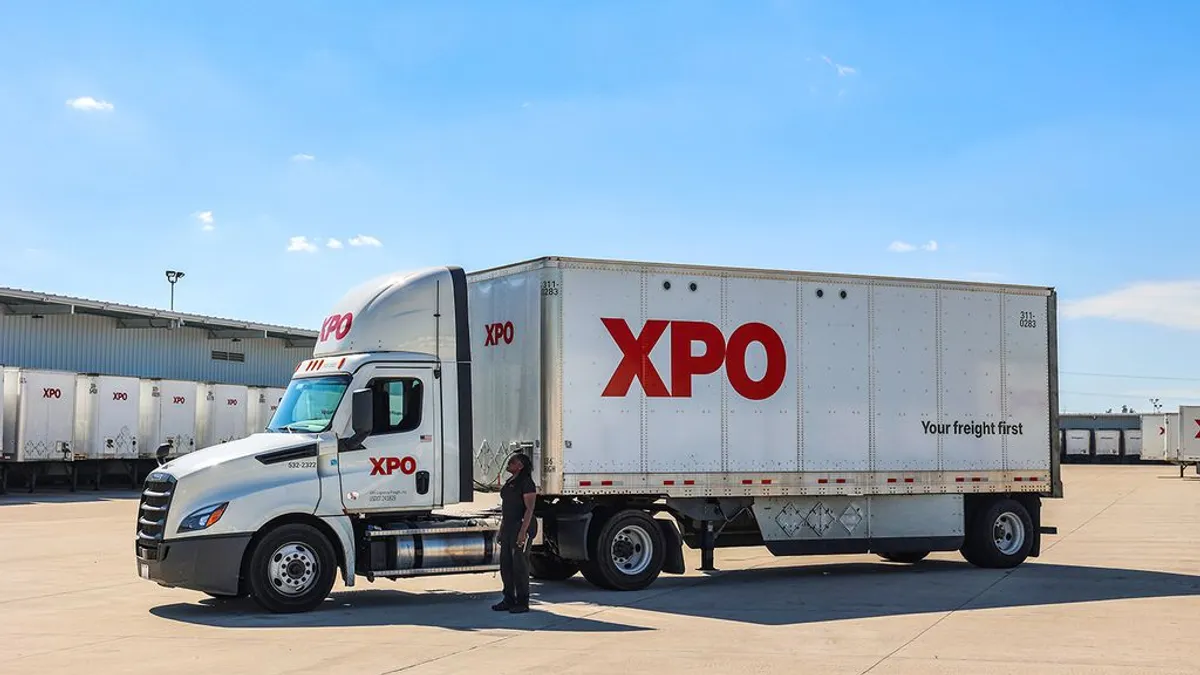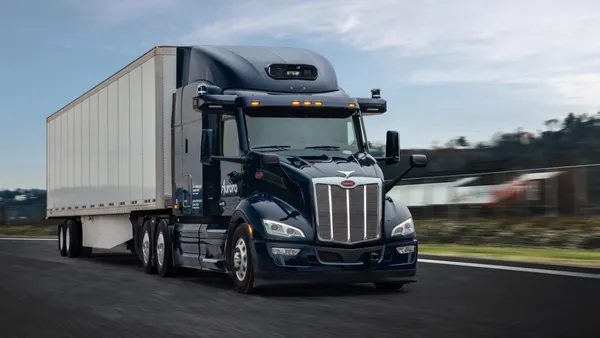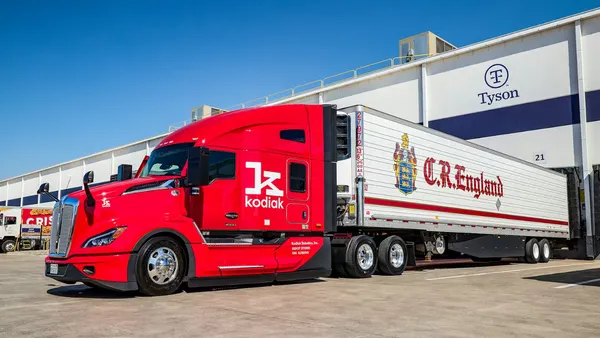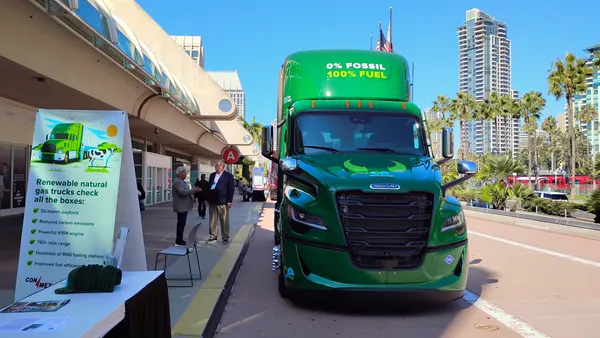Dive Brief:
- Greenlane, a joint venture between Daimler Truck, NextEra Energy and BlackRock, announced plans for a second electric vehicle charging corridor that connects Southern California to Arizona, according to an Aug. 12 press release.
- The corridor will leverage Greenlane’s existing flagship station in Colton, California, enabling long-haul electric truck charging. The site features 40-high speed chargers, 12 pull through lanes and 29 bobtail lanes for medium- heavy-duty EVs.
- Through several pilot programs with electric truck OEM Windrose Technology, the new route “has validated the viability of long-haul electric trucking through successful single-charge journeys from Colton, next to San Bernardino in the Inland Empire, to Phoenix,” per the release.
Dive Insight:
Greenlane’s second corridor is one of several planned routes the company is creating to develop its network of commercial EV charging stations for medium- and heavy-duty fleets, according to the press release.
“Our second corridor was strategically selected to best support the carriers and shippers who keep our economy moving,” Patrick Macdonald-King, CEO of Greenlane, said in the release.
Electric trucking carrier Nevoya is one of Greenlane’s first customers as part of a pilot program with Windrose Technology.
Nevoya will use the Windrose R700 electric truck as part of the pilot. The R700 Class 8 electric semi already completed single-charge journeys from Greenlane's Colton location along the the I-15 corridor near Las Vegas and I-10 corridor near Phoenix to Buckeye, Arizona. The 300-mile route had a gross combined weight rating of 74,420 pounds and on a single charge completed the trip with 12% battery charge remaining, per the release.
With a successful trial to showcase, Windrose also plans to manufacture 2,000 electric trucks in 2026 and eventually scale up to 10,000 in 2027 globally.
“Windrose's remarkable achievements during testing demonstrate that our high-performance charging network can handle the most demanding freight operations, giving us confidence that this I-10 corridor will serve as a critical backbone for zero-emission freight,” Macdonald-King said.


